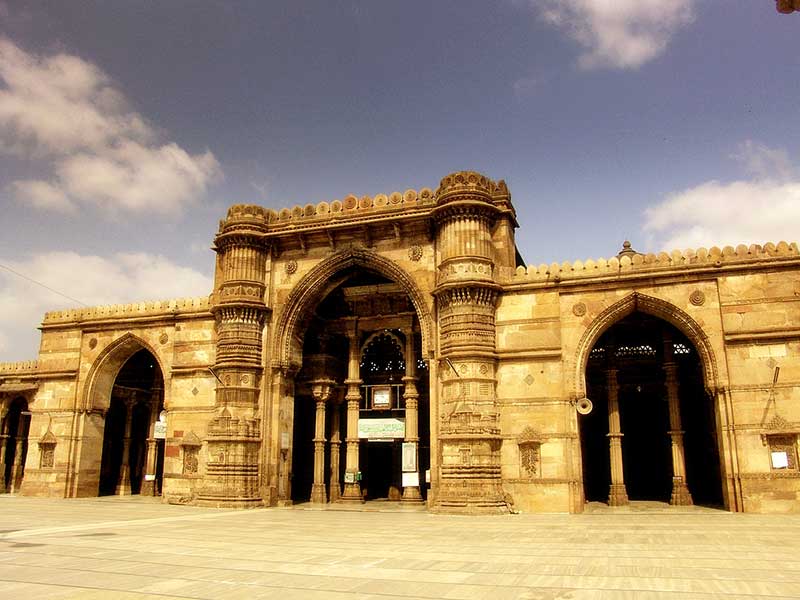Ahmedabad, also known as Amdavad is the largest city and former capital of the Indian state of Gujarat. It is the administrative headquarter of the Ahmedabad district and the seat of the Gujarat High Court. Ahmedabad's population of 5,633,927 (as per 2011 population census) makes it the fifth most populous city in India, and the encompassing urban agglomeration population estimated at 7,650,000 is the seventh most populous in India.Ahmedabad is located on the banks of the Sabarmati River, 30 km (19 miles) from the state capital Gandhinagar, which is its twin city.
Ahmedabad has emerged as an important economic and industrial hub in India. It is the second largest producer of cotton in India, and its stock exchange is the country's second oldest. Cricket is a popular sport in Ahmedabad, which houses the 54,000-seat Sardar Patel Stadium. The effects of liberalisation of the Indian economy have energised the city's economy towards tertiary sector activities such as commerce, communication and construction.Ahmedabad's increasing population has resulted in an increase in the construction and housing industries resulting in recent development of skyscrapers.
Ahmedabad has been selected as one of the hundred Indian cities to be developed as a smart city under Government of India's flagship Smart Cities Mission.In July 2017, the Historic City of Ahmadabad or Old Ahmadabad, was declared as India's first UNESCO World Heritage City.
History
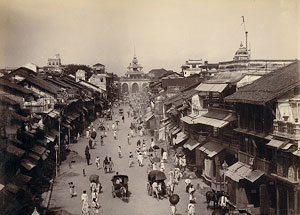
The area around Ahmedabad has been inhabited since the 11th century, when it was known as Ashaval .At that time, Karna,
the Chaulukya ruler of Anhilwara (modern Patan), waged a successful war against the Bhil king of Ashaval, and established
a city called Karnavati on the banks of the Sabarmati.Solanki rule lasted until the 13th century, when Gujarat came
under the control of the Vaghela dynasty of Dholka. Gujarat subsequently came under the control of the Delhi Sultanate
in the 14th century. However, by the earlier 15th century, the local governor Zafar Khan Muzaffar established his
independence from the Delhi Sultanate and crowned himself Sultan of Gujarat as Muzaffar Shah I, thereby founding the
Muzaffarid dynasty.This area finally came under the control of his grandson Sultan Ahmed Shah in 1411 A.D. who while
at the banks of Sabarmati liked the forested area for a new capital city and laid the foundation of a new walled city
near Karnavati and named it Ahmedabad after the four saints in the area by the name Ahmed.According to other sources,
he named it after himself.Ahmed Shah I laid the foundation of the city on 26 February 1411 (at 1.20 pm, Thursday, the
second day of Dhu al-Qi'dah, Hijri year 813) at Manek Burj. He chose it as the new capital on 4 March 1411.
According to the 2011 census, Hindus are the predominant religious community in the city comprising 81.56% of the
population followed by Muslims (13.51%), Jains (3.62%), Christians (0.85%) and Sikhs (0.24%).Buddhists, people following
other religions and those who didn't state any religion make up the remainder.
Ahmedabad lies at 23.03°N 72.58°E in western India at 53 metres (174 ft) above sea level on the banks of the Sabarmati
river, in north-central Gujarat. It covers an area of 464 km2 (179 sq mi).[1] The Sabarmati frequently dried up in the
summer, leaving only a small stream of water, and the city is in a sandy and dry area. However with the execution of the
Sabarmati River Front Project and Embankment, the waters from the Narmada river have been diverted to the Sabarmati to
keep the river flowing throughout the year, thereby eliminating Ahmedabad's water problems. The steady expansion of the
Rann of Kutch threatened to increase desertification around the city area and much of the state; however, the Narmada
Canal network is expected to alleviate this problem. Except for the small hills of Thaltej-Jodhpur Tekra, the city is
almost flat. Three lakes lie within the city's limits—Kankaria, Vastrapur and Chandola. Kankaria, in the neighbourhood of
Maninagar, is an artificial lake developed by the Sultan of Gujarat, Kutb-ud-din, in 1451.
Ahmedabad has a hot, semi-arid climate, with marginally less rain than required for a tropical savanna climate. There are
three main seasons: summer, monsoon and winter. Aside from the monsoon season, the climate is extremely dry. The weather
is hot from March to June; the average summer maximum is 43 °C (109 °F), and the average minimum is 24 °C (75 °F). From
November to February, the average maximum temperature is 30 °C (86 °F), the average minimum is 13 °C (55 °F), and the
climate is extremely dry. Cold northerly winds are responsible for a mild chill in January. The southwest monsoon brings
a humid climate from mid-June to mid-September. The average annual rainfall is about 800 millimetres (31 in), but
infrequent heavy torrential rains cause local rivers to flood and it is not uncommon for droughts to occur when the
monsoon does not extend as far west as usual. The highest temperature in the city was recorded on 18 and 19 May 2016
which was 50 °C (122 °F).
Ahmedabad observes a wide range of festivals. Popular celebrations and observances include Uttarayan, an annual
kite-flying day on 14 and 15 January. Nine nights of Navratri are celebrated with people performing Garba, the most
popular folk dance of Gujarat, at venues across the city. The festival of lights, Deepavali, is celebrated with the
lighting of lamps in every house, decorating the floors with rangoli, and the lighting of firecrackers. The annual Rath
Yatra procession on the Ashadh-sud-bij date of the Hindu calendar at the Jagannath Temple and the procession of Tajia
during the Muslim holy month of Muharram are important events.
Newspapers in Ahmedabad include English dailies such as The Times of India, Indian Express, DNA, The Economic Times, The
Financial Express, Ahmedabad Mirror and Metro.Newspapers in other languages include Divya Bhaskar, Gujarat Samachar,
Sandesh, Rajasthan Patrika, Sambhaav, and Aankhodekhi.The city is home to the historic Navajivan Publishing House,
which was founded in 1919 by Mahatma Gandhi.
Kankaria Lake, which was earlier known as Hauj-E-Kutub, is the biggest lake in Ahmedabad. During the time of kings, this
lake served as the bathing place for all the badshahs. Built by Sultan Kutubuddin in 15th century, this lake consisted
of a water purification system. The lake is circular, however, at one point it opens into a walkway, which leads to
garden called Nagina Wadi.
Sabarmati Ashram, which is located at banks of the Sabarmati River, was found in 1915. This ashram was the residence of
Mohandas Karamchand Gandhi till 1930. During the time of independence movement, the ashram was referred to as the
Satyagrah Ashram. This ashram was the inception point for famous Dandi March in 1930, due to which it has been declared
as the national monument.
Science City is an educational centre, which is focused on science and technology. This science city was set up in 1960,
with a motive to spread awareness about the progression of science and its application in human life. Ventured by state
government of Gujarat, this science city is a blend of education and entertainment.
Swami Narayan Mandir, located in the heart of the city, is one of the popular temples in the city. Designed similar to a
traditional Gujarati mansion, this temple comprises nine tombs that are located on the southern side. These nine tombs
are known as 'Nau Gaz Pir' or the 'Nine Yard Saints'. Temple is dedicated to Lord Narnarayan, however, idols of
Radhakrishna, Dharmadev-Bhakti Mata and Hari Krishna Maharaj are also worshipped.
Hathisingh Jain Temple was established in 1850 by Seth Hathisingh, who was a rich Jain merchant. This temple is dedicated
to the 15th 'Jain Tirthankar', known as Dharamnath. The temple is made using white marble, which is adorned with
intricately designed carvings. The temple is a double-storied building.
Juma Masjid, located towards the eastern side of Teen Darwaza, is one of the most sacred mosques in Ahmedabad. It was
built in 1423 A.D. by Sultan Ahmed Shah, who is known to be the founder of the city. Mosque has been constructed using
yellow sandstone, which reflects the amalgamation of Hindu and Islamic styles in the architecture. The mosque consists
of 15 domes that are supported by 260 pillars.
Ahmedabad's Nal Sarovar bird sanctuary is a beautiful natural lake which makes an excellent sightseeing spot for tourists.
Spread over an area of 116 sq. km, this place attracts more tourists because of its vivid birds that migrate from Siberia
. Nal Sarovar serves as an oasis of tranquility and serenity in the midst of hustle and bustle of the Ahmedabad's city
life. You can see flocks of birds mainly consisting of ducks, flamingos, pelicans, and geese visiting this Lake.
Cricket is one of the popular sports in the city.Sardar Patel Stadium (also known as Motera Stadium), built in 1982,
hosts both one day internationals and test matches. It has a seating capacity of 54,000.It hosted the 1987, 1996
and 2011 Cricket World Cups.Ahmedabad also has a second cricket stadium at the Ahmedabad Municipal Corporation's
Sports Club of Gujarat which is the home ground of the Gujarat cricket team that plays in the Ranji Trophy tournament.
During the period of Maratha Empire governance, the city became the centre of a conflict between the Peshwa of Poona and
the Gaekwad of Baroda.In 1780, during the First Anglo-Maratha War, a British force under James Hartley stormed and
captured Ahmedabad, but it was handed back to the Marathas at the end of the war. The British East India Company took
over the city in 1818 during the Third Anglo-Maratha War.A military cantonment was established in 1824 and a municipal
government in 1858.Incorporated into the Bombay Presidency during British rule, Ahmedabad became one of the most
important cities in the Gujarat region. In 1864, a railway link between Ahmedabad and Mumbai (then Bombay) was
established by the Bombay, Baroda, and Central India Railway (BB&CI), enabling traffic and trade between northern and
southern India via the city.Over time, the city established itself as the home of a developing textile industry, which
earned it the nickname "Manchester of the East".
 The Indian independence movement developed roots in the city when Mahatma Gandhi established two ashrams – the Kochrab
Ashram near Paldi in 1915 and the Satyagraha Ashram (now Sabarmati Ashram) on the banks of the Sabarmati in 1917 – which
would become centres of nationalist activities.During the mass protests against the Rowlatt Act in 1919, textile workers
burned down 51 government buildings across the city in protest at a British attempt to extend wartime regulations after
the First World War. In the 1920s, textile workers and teachers went on strike, demanding civil rights and better pay
and working conditions. In 1930, Gandhi initiated the Salt Satyagraha from Ahmedabad by embarking from his ashram on the
Dandi Salt March. The city's administration and economic institutions were rendered inoperative in the early 1930s by
the large numbers of people who took to the streets in peaceful protests, and again in 1942 during the Quit India
Movement. Following independence and the partition of India in 1947, the city was scarred by the intense communal
violence that broke out between Hindus and Muslims in 1947, Ahmedabad was the focus for settlement by Hindu migrants from
Pakistan, who expanded the city's population and transformed its demographics and economy.
The Indian independence movement developed roots in the city when Mahatma Gandhi established two ashrams – the Kochrab
Ashram near Paldi in 1915 and the Satyagraha Ashram (now Sabarmati Ashram) on the banks of the Sabarmati in 1917 – which
would become centres of nationalist activities.During the mass protests against the Rowlatt Act in 1919, textile workers
burned down 51 government buildings across the city in protest at a British attempt to extend wartime regulations after
the First World War. In the 1920s, textile workers and teachers went on strike, demanding civil rights and better pay
and working conditions. In 1930, Gandhi initiated the Salt Satyagraha from Ahmedabad by embarking from his ashram on the
Dandi Salt March. The city's administration and economic institutions were rendered inoperative in the early 1930s by
the large numbers of people who took to the streets in peaceful protests, and again in 1942 during the Quit India
Movement. Following independence and the partition of India in 1947, the city was scarred by the intense communal
violence that broke out between Hindus and Muslims in 1947, Ahmedabad was the focus for settlement by Hindu migrants from
Pakistan, who expanded the city's population and transformed its demographics and economy.
Religion and Ethnicity
Geography
Location
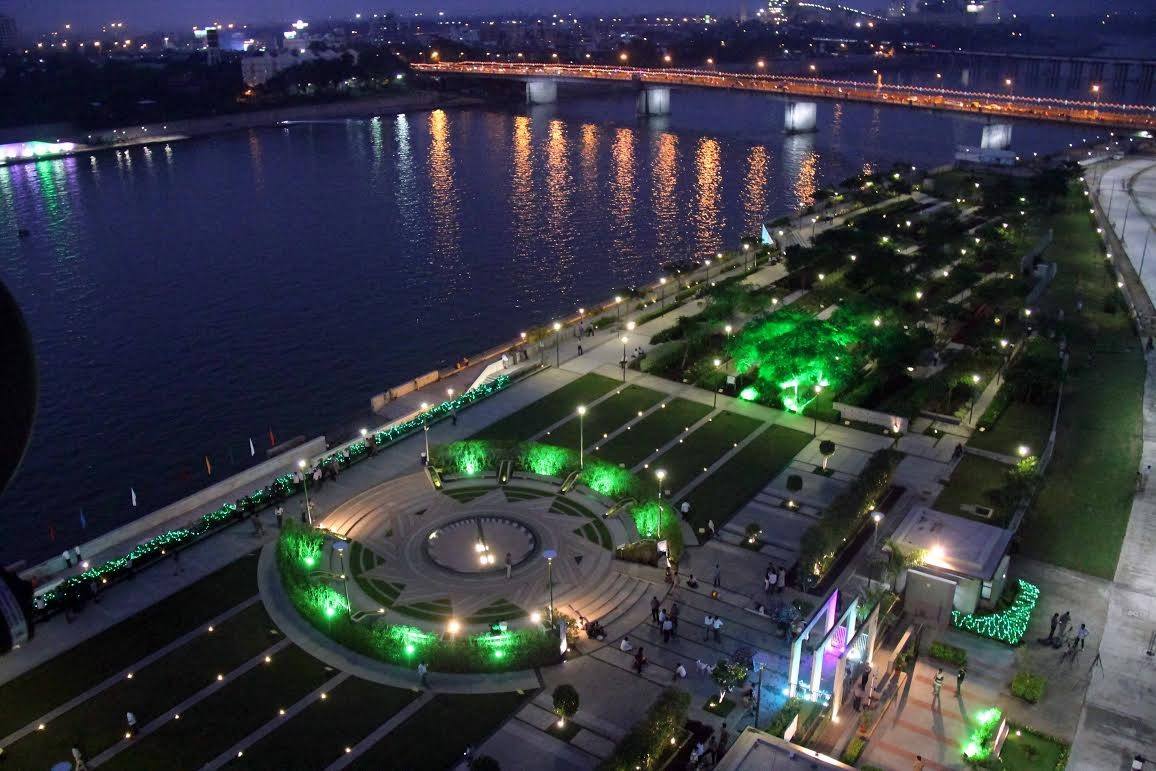
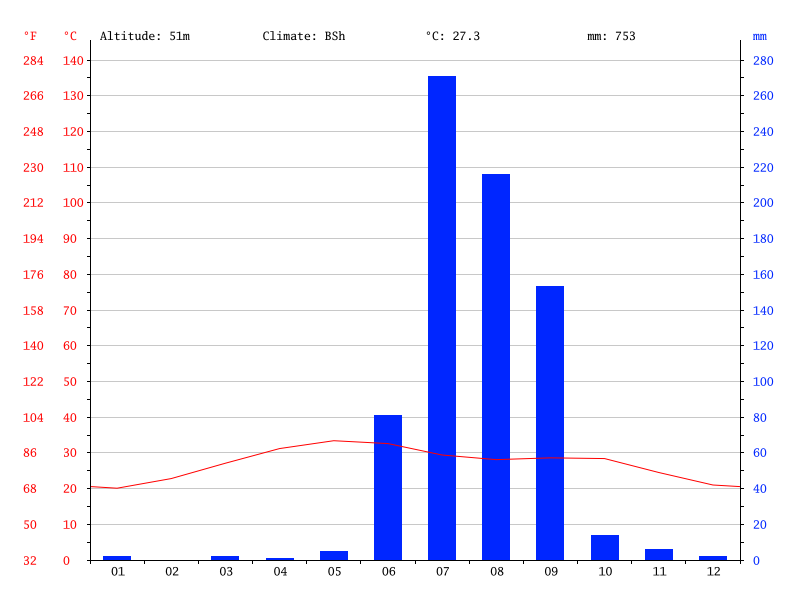
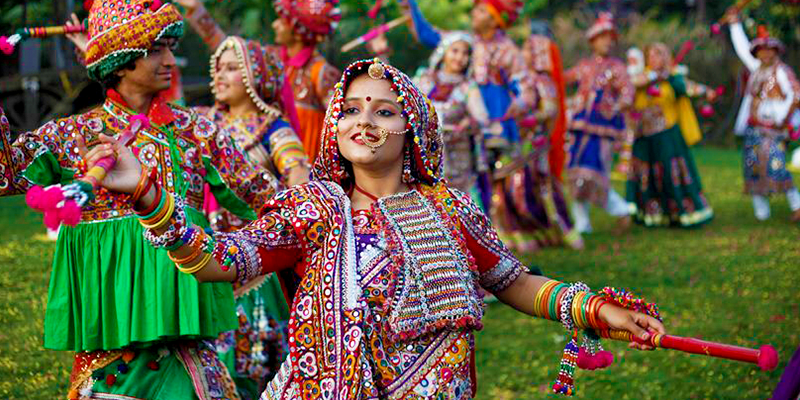
There are many restaurants, which serve a wide array of Indian and international cuisines. Most of the food outlets serve
only vegetarian food, as a strong tradition of vegetarianism is maintained by the city's Jain and Hindu communities.The
first all-vegetarian Pizza Hut in the world opened in Ahmedabad.KFC has a separate staff uniform for serving vegetarian
items and prepares vegetarian food in a separate kitchen,as does McDonald's.Ahmedabad has a quite a few restaurants
serving typical Mughlai non-vegetarian food in older areas like Bhatiyar Gali, Kalupur and Jamalpur.
Manek Chowk is an open square near the centre of the city that functions as a vegetable market in the morning and a
jewellery market in the afternoon. However, it is better known for its food stalls in the evening, which sell local
street food. It is named after the Hindu saint Baba Maneknath.[119] Parts of Ahmedabad are known for their folk art. The
artisans of Rangeela pol make tie-dyed bandhinis, while the cobbler shops of Madhupura sell traditional mojdi
(also known as mojri) footwear. Idols of Ganesha and other religious icons are made in huge numbers in the Gulbai
Tekra area. The shops at the Law Garden sell mirror work handicraft.
Shreyas Foundation has four museums on the same campus. Shreyas Folk Museum (Lokayatan Museum) has art forms and
artefacts from communities of Gujarat. Kalpana Mangaldas Children's Museum has a collection of toys, puppets, dance and
drama costumes, coins and a repository of recorded music from traditional shows from all over the world. Kahani houses
photographs of fairs and festivals of Gujarat. Sangeeta Vadyakhand is a gallery of musical instruments from India and
other countries.
L D Institute of Indology houses about 76,000 hand-written Jain manuscripts with 500 illustrated versions and 45,000
printed books, making it the largest collection of Jain scripts, Indian sculptures, terracottas, miniature paintings,
cloth paintings, painted scrolls, bronzes, woodwork, Indian coins, textiles and decorative art, paintings of Rabindranath
Tagore and art of Nepal and Tibet.N C Mehta Gallery of Miniature Paintings has a collection of ornate miniature
paintings and manuscripts from all over India.
In 1949 Darpana Academy of Performing Arts was established by the eminent scientist Dr. Vikram Sarabhai and world
renowned Bharat Natyam dancer Mrinalini Sarabhai, and thus Ahmemedabad city became the center of Indian classical dance.
Media
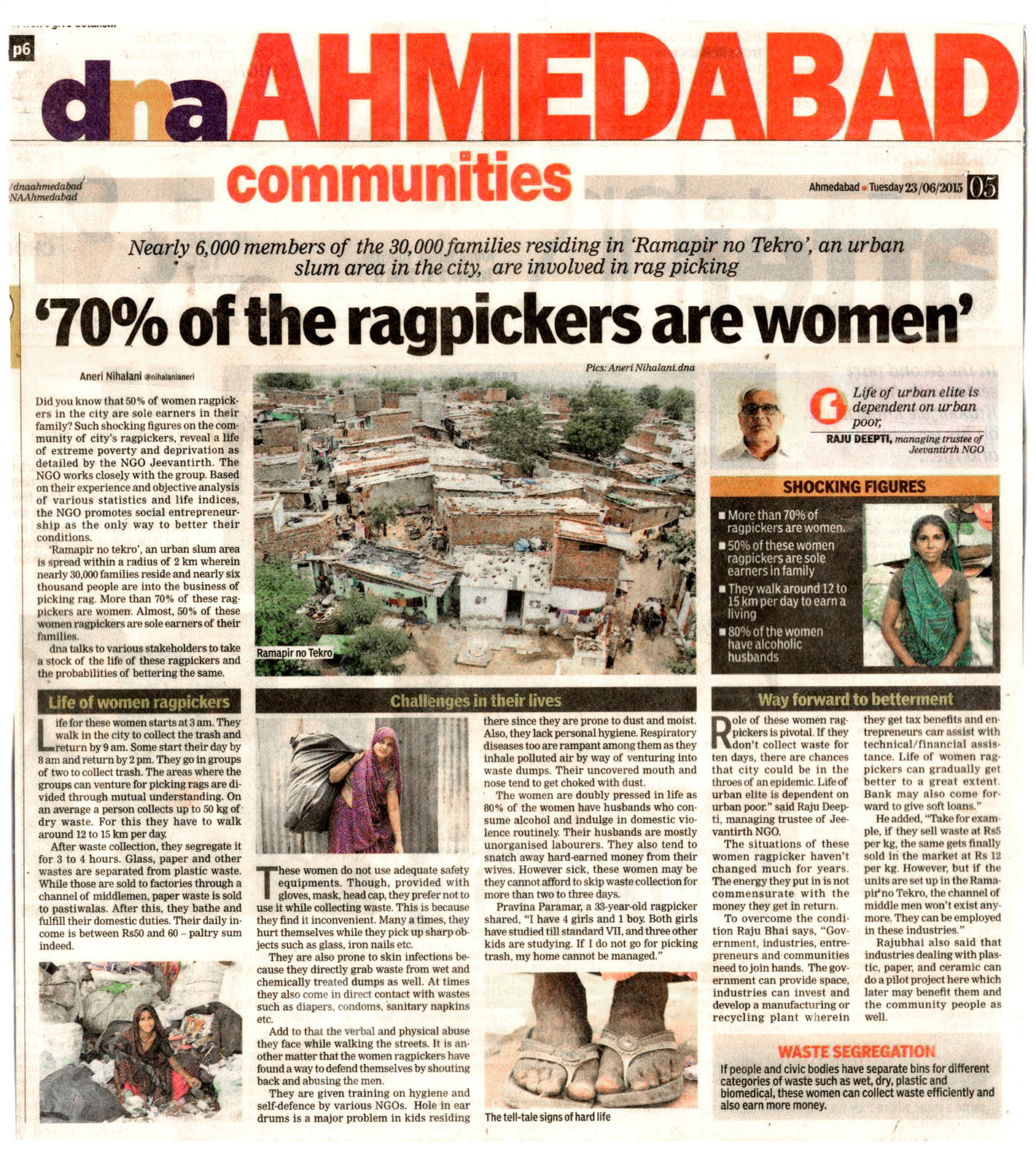
The state-owned All India Radio Ahmedabad is broadcast both on the medium wave and FM bands (96.7 MHz) in the city.It
competes with five private local FM stations: Radio City (91.1 MHz), Red FM (93.5 MHz), My fm (94.3 MHz), Radio One
(95.0 MHz), Radio Mirchi (98.3 MHz) and Mirchi Love (104 MHz). Gyan Vani (104.5 MHz) is an educational FM radio station
run under media co-operation model.In March 2012 Gujarat University started campus radio service on 90.8 MHz which was
first kind of it in state and fifth in India.
The state-owned television broadcaster Doordarshan provides free terrestrial channels, while two multi system
operators—InCablenet and Siti Cable and GTPL—provide a mix of Gujarati, Hindi, English, and other regional channels via
cable.Telephone services are provided by landline and mobile operators such as BSNL, Reliance CDMA & Reliance GSM,
Airtel, Uninor, Vodafone, Idea and Tata Indicom, Jio.
Transport
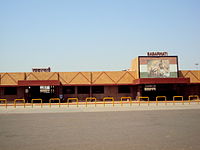
Ahmedabad is one of six operating divisions in the Western Railway zone.Railway lines connect the city to towns in
Gujarat and major Indian cities. Ahmedabad railway station, locally known as Kalupur station is the main terminus with
11 others.
The mass-transit metro system, MEGA for the cities of Ahmedabad and Gandhinagar is under construction since March 2015.
The North-South and East-West corridors are expected to complete by 2019.
 National Highway 48 passes through Ahmedabad and connects it with Delhi and Mumbai. The National Highway 147 also links
Ahmedabad to Gandhinagar. It is connected to Vadodara through National Expressway 1, a 94 km (58 miles) long expressway
with two exits. This expressway is part of the Golden Quadrilateral project.
National Highway 48 passes through Ahmedabad and connects it with Delhi and Mumbai. The National Highway 147 also links
Ahmedabad to Gandhinagar. It is connected to Vadodara through National Expressway 1, a 94 km (58 miles) long expressway
with two exits. This expressway is part of the Golden Quadrilateral project.
In 2001, Ahmedabad was ranked as the most polluted city in India, out of 85 cities, by the Central Pollution Control
Board. The Gujarat Pollution Control Board gave auto rickshaw drivers an incentive of ?10,000 to convert all 37,733 auto
rickshaws in Ahmedabad to cleaner burning compressed natural gas to reduce pollution. As a result, in 2008, Ahmedabad
was ranked as 50th most polluted city in India.
Janmarg is a bus rapid transit system in the city. It is operated by Ahmedabad Janmarg Limited, a subsidiary of Ahmedabad
Municipal Corporation and others.Inaugurated in October 2009, the network expanded to 89 kilometres (55 miles) by
December 2015 with daily ridership of 1,32,000 passengers.The Ahmedabad Municipal Transport Service (AMTS), maintained
by Ahmedabad Municipal Corporation, runs the public bus service in the city.At present, AMTS has more than 750 buses
serving the city.
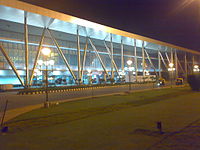
Sardar Vallabhbhai Patel International Airport, 15 km (9.3 miles) from the city centre, provides domestic and
international flights.It is the busiest airport in Gujarat and the eighth busiest in India with an average of
250 aircraft movements a day.The Dholera International Airport is proposed near Fedara. It will be the largest airport
in India with a total area of 7,500 hectares.
Tourists Places in Ahmedabad

Kankaria Lake
Near the lake, there is a gym called Ambubhai Purani Vyayamshala. Today, the lake is a popular picnic spot with lighted
walkways and food corners. This lake is located in the southern part of the city in Maninagar area.
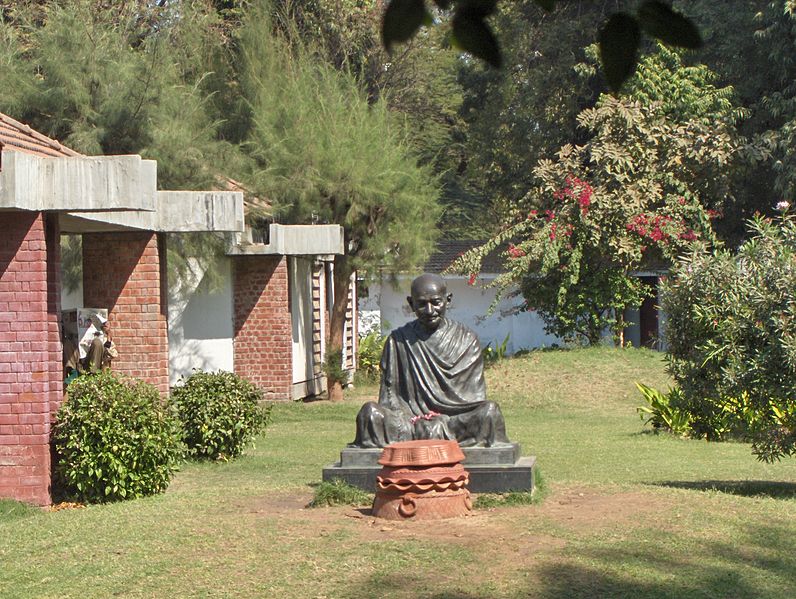
Sabarmati Ashram
Today, this ashram is basically a museum, known as Gandhi Smarak Sangrahalaya. Along with the museum, this ashram houses
a library, auditorium and photo galleries depicting the life of Mahatma Gandhi. The exhibition in the museum consists of
8 life-size painting and around 250 photo-enlargements historic events of Gandhi's life. Visitors can also see the
archive of letters written by Gandhi, displayed in the galleries of the museum.
Library holds a collection of 35,000 books, all of which are based on the life of Mahatma Gandhi and Indian freedom
movement. The reading room within the library comprises around 80 periodicals in English, Gujarati and Hindi. Visitors
can explore the ashram in the 90 minutes guided tour that is organised by the trust, which runs this ashram.
The tour starts with the slide show and takes the tourists to various parts of ashram like Magan Niwas, Upasana Mandir,
Hriday Kunj and Vinoba-Mira Kutir. Other parts like Nandini, Udyog Mandir, Somnath Chattralaya, Teacher's Niwas and
Gandhi in Ahmedabad can also be visited. The 90 minutes long tour ends after visiting Painting Gallery, “My life is my
message”, and Library and Archives.

Science City
Spread over an area of 1,069,976.7 sq. metre, this science city houses IMAX 3D Theatre, exhibition hall, amphitheatre and
thrill rides. Musical Dancing Fountain, Aquamobil and ride simulations are the other attractions of the city. This
science city has two wings, Energy Education Park and Life Science Park. In the Life Science Park, visitors can spot
varieties of butterflies and rare cacti plants.
At the IMAX 3D Theatre, there are several shows throughout the day, which start at 2:30 pm and last till 7:30 pm. The
Musical Fountain show starts at 6:30 pm and visitors can catch a glimpse of last show at 8:40 pm
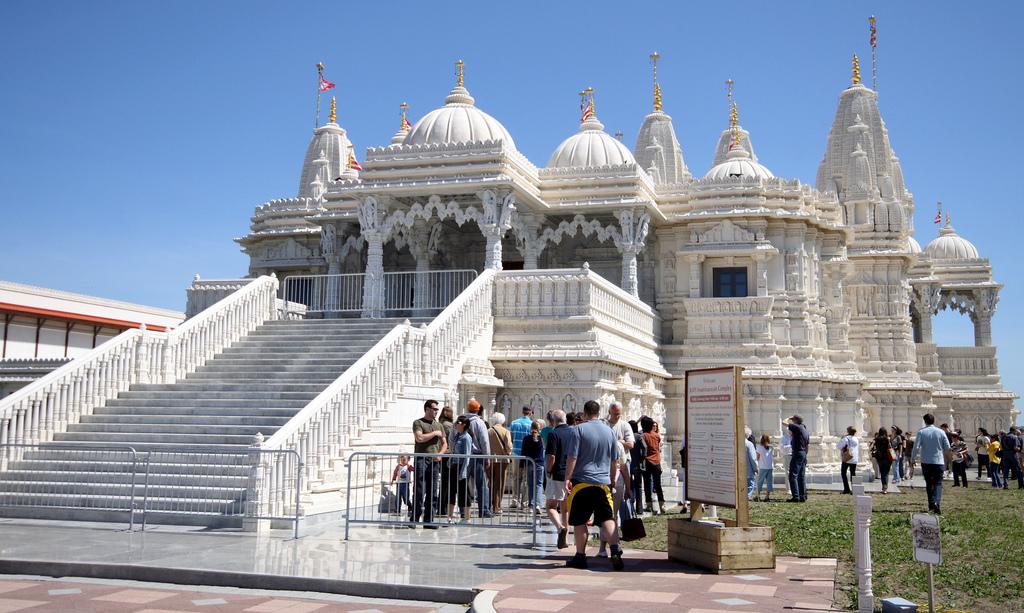
Swami Narayan Mandir
Deities of Lord Shri Ji Maharaj, Lord Balswaroop Ghanshyam Maharaj and Lord Ghanshyam Maharaj are also placed in the
temple. The temple is known for its intricately crafted wooden carvings and unique architecture. The mansion of the
Swami Narayan Temple serves as the official residence of H.H. Acharya Maharaj of Shri Narnarayandev Desh.
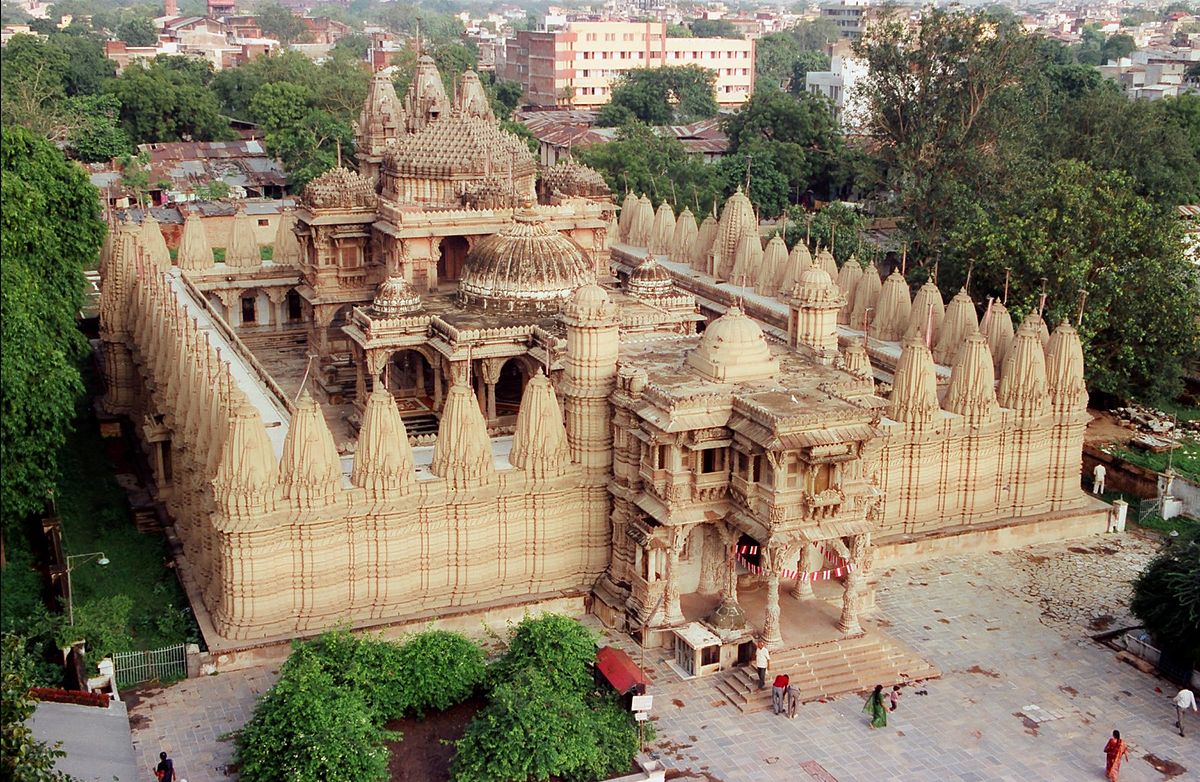
Hathisingh Jain Temple
There are 52 shrines in the temple, each of which adorns an image of a 'Tirthankar'. One of the shrines has the marble
replica of the 15th Tirthankar, Dharamnath. Hathisingh Jain Temple is surrounded by porches in distinct arrangement from
three sides. The porch that is in the front of the temple is ornamented by a dome shaped structure.
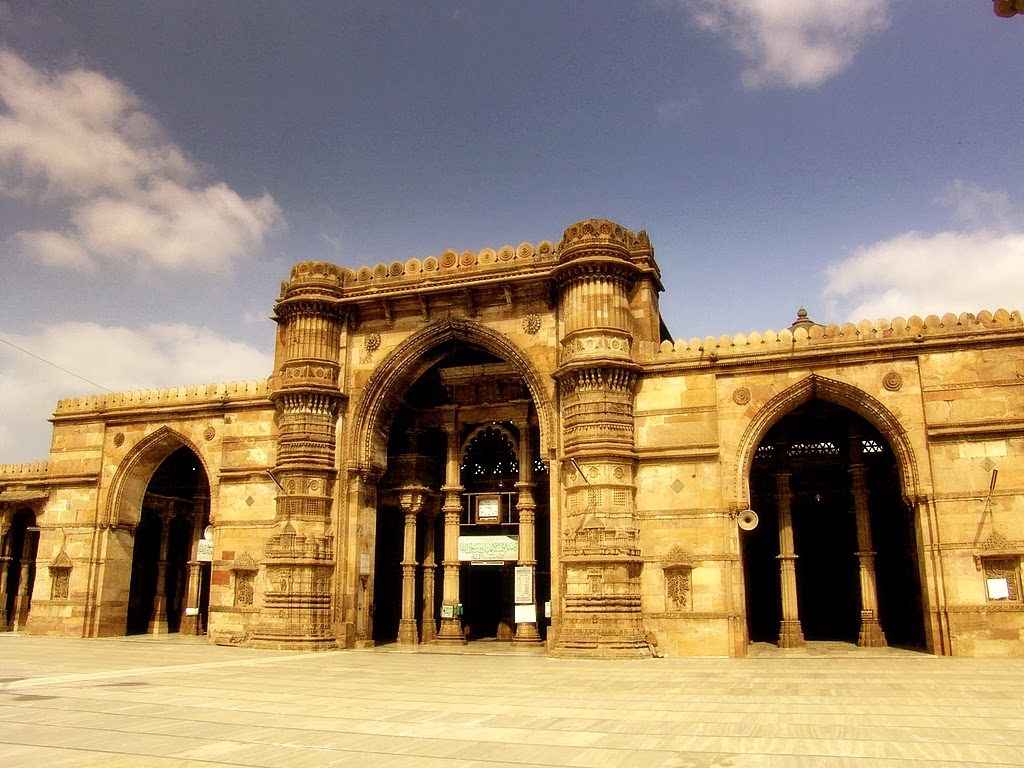
Juma Masjid
Originally, Juma Masjid was known as the Masjid-i-Jahanuma, which means a mosque that commands the view of the world.
Tourists visiting this mosque can see a cupboard near the northern gate. This cupboard contains some of the relics of
Muhammad like Koran written on deerskin, a red beard-hair of the prophet, his sandals and footprint embedded in a marble
slab.
Towards the eastern entrance of the mosque, mausoleum of Sultan Ahmed Shah can be seen. Graveyard of three rulers,
namely; Ahmed Shah I, his son, Mohammed Shah and his grandson, Qutub-Ud-Din Ahmed Shah II, can be found in this
mausoleum. Constructed by Mohammad Shah II as a tribute to his father, this mausoleum is popularly known as Roja.

Nal Sarovar Bird Sanctuary
Sports
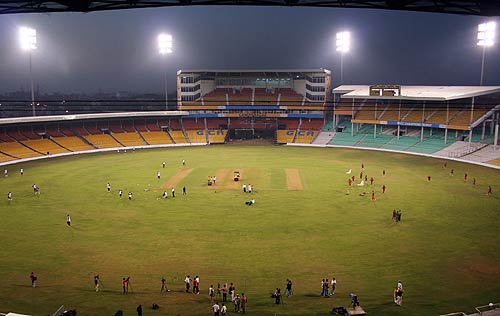
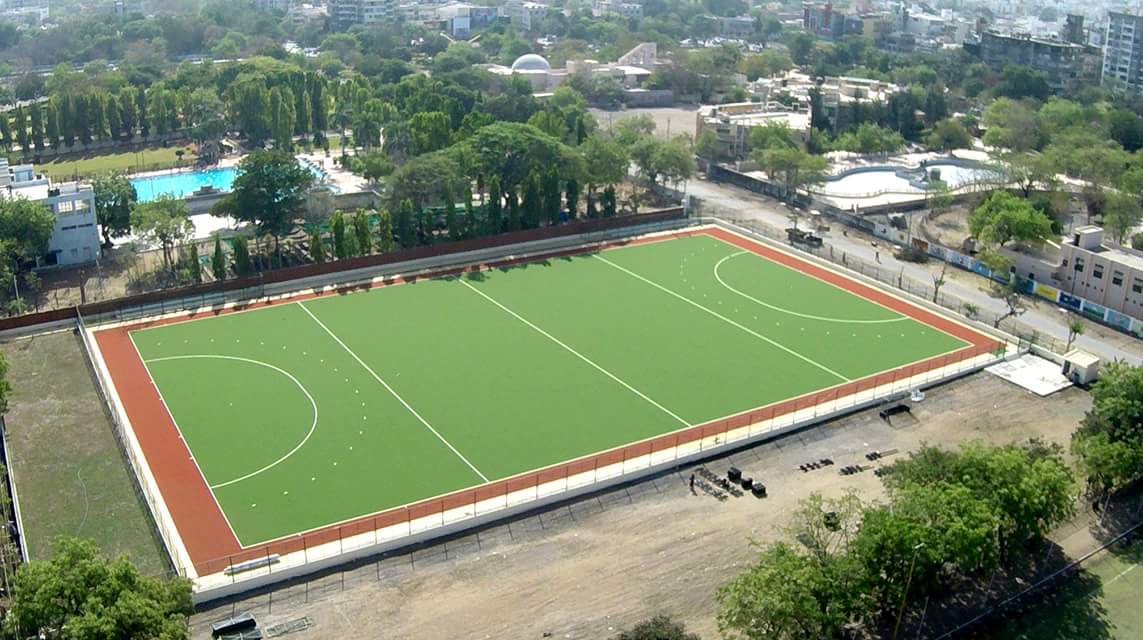
Other popular sports are field hockey, badminton, tennis, squash and golf. Ahmedabad currently has three golf courses.
Mithakhali Multi Sports Complex is being developed by the AMC to promote various indoor sports.Recently Ahmedabad hosted
national level games for roller skating and table tennis.Kart racing is gaining popularity in the city, with the
introduction of a 380 metre long track based on Formula One concepts.
Sabarmati Marathon is organised every year in December–January since 2011 which have different categories like full and
half marathon, 7 km dream run, 5 km run for visually challenged and 5 km wheelchair run.In 2007, Ahmedabad hosted the
51st national level shooting games.The 2016 Kabaddi World Cup is held in Ahmedabad at The Arena by Transtadia
(a renovated Kankaria football ground). Geet Sethi, a five-time winner of the World Professional Billiards Championship
and a recipient of India's highest sporting award, the Rajiv Gandhi Khel Ratna, was raised in Ahmedabad.
